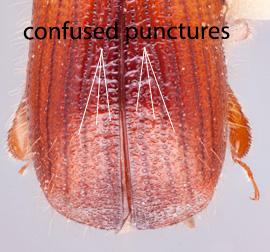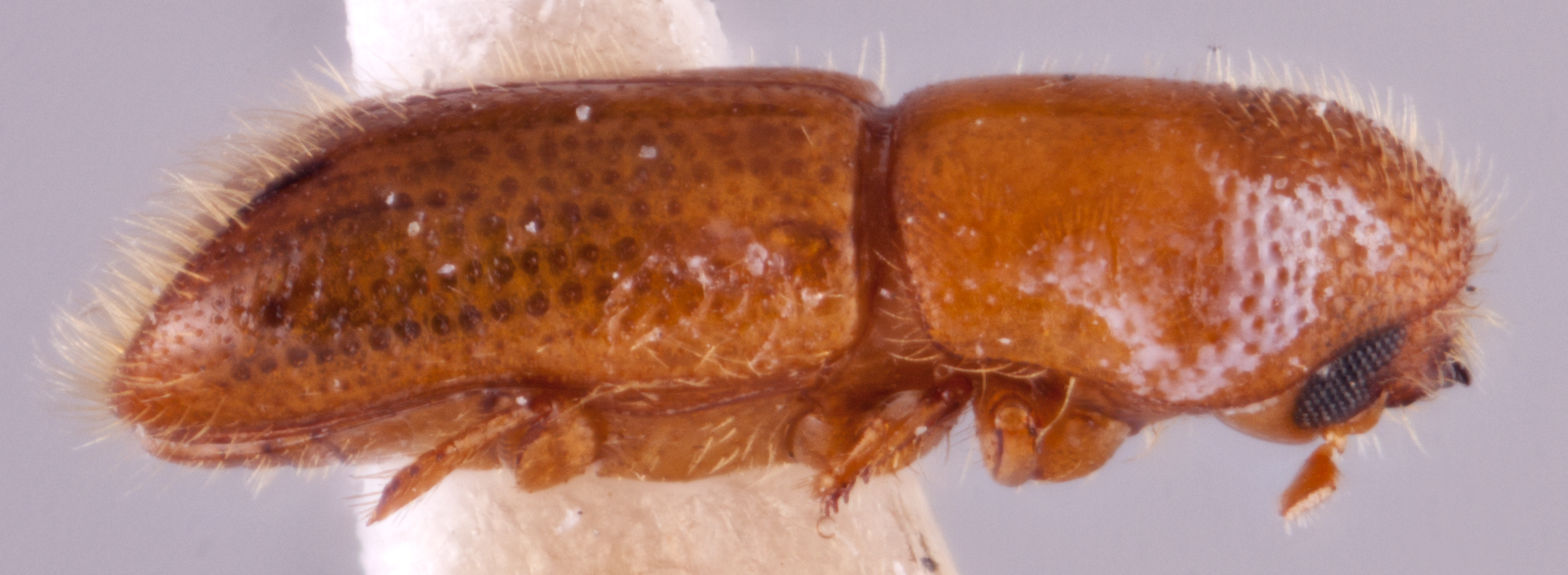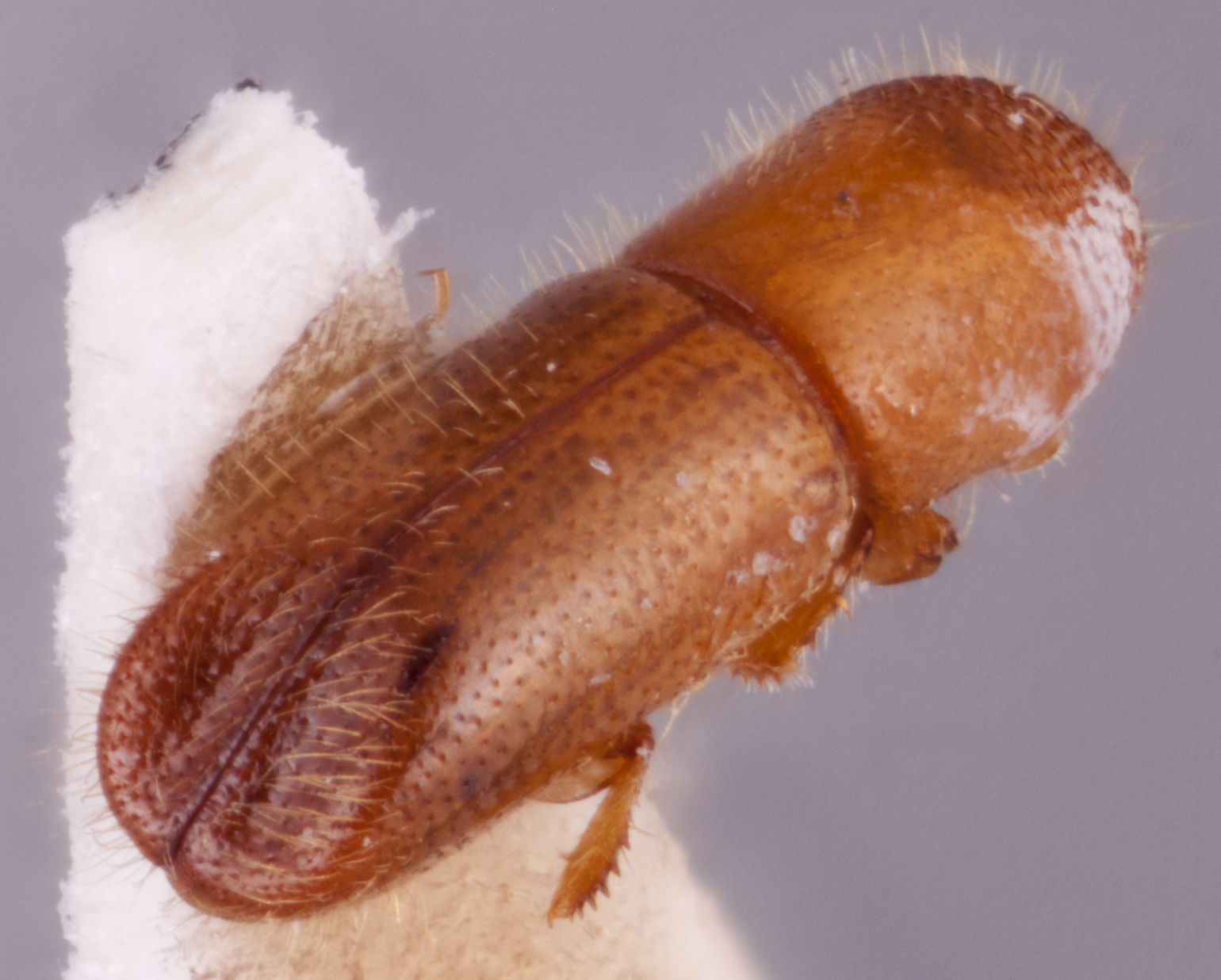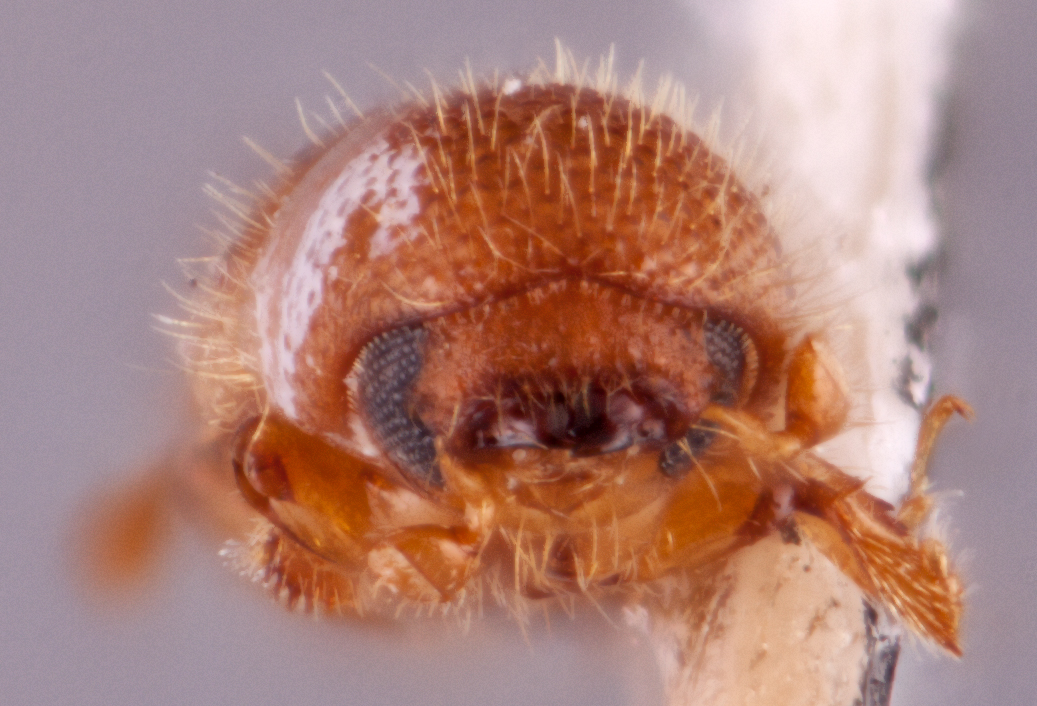Dryoxylon
|
Dryoxylon onoharaense; R.K. Osborn |
|
Dryoxylon onoharaense; R.K. Osborn |
|
Dryoxylon onoharaense; R.K. Osborn |
|
Dryoxylon onoharaense; R.K. Osborn |
Taxonomy
Dryoxylon Bright and Rabaglia, 1999: 333.
Diagnosis
2.20−2.40 mm long and elongate (3.14−3.43 times as long as wide). Dryoxylon is most easily distinguished by the anterioranterior:
the front or forward; opposite of posterior margin of pronotumpronotum:
margin of pronotumpronotum:
the dorsal surface of the thorax
in laterallateral:
pertaining to the side
 view evenly arched, summitsummit:
view evenly arched, summitsummit:
highest point, used for pronotum and elytra, denotes the peak between pronotal frontal slope and disc, and between elytral disc and declivity not elevated or evident, anterior margin weakly emarginated at middle; elytral declivitydeclivity:
not elevated or evident, anterior margin weakly emarginated at middle; elytral declivitydeclivity:
downward slope of either the pronotum or elytra
 distinctly moderately sulcatesulcate:
distinctly moderately sulcatesulcate:
deeply furrowed or grooved
; declivital face and laterallateral:
pertaining to the side
 margins unarmed. Unlike nearly all other Xyleborini, submentum is flat, and there are comparatively fewer socketed denticlesdenticle:
margins unarmed. Unlike nearly all other Xyleborini, submentum is flat, and there are comparatively fewer socketed denticlesdenticle:
a small tooth, the sides of which are equal and the tip is above the middle of the base on the outer margin of the pro-(5), meso- (6) and metatibiae (5). In addition, the scutellumscutellum:
on the outer margin of the pro-(5), meso- (6) and metatibiae (5). In addition, the scutellumscutellum:
a shield-like sclerotized plate located at the midpoint of the elytral base
is flat, flush with elytraelytron:
the two sclerotized forewings of beetles that protect and cover the flight wings
, the procoxae are narrowly separated, mycangial tufts are absent, and the elytraelytron:
the two sclerotized forewings of beetles that protect and cover the flight wings
is unarmed.
May be confused with
Dryoxylon is superficially similar to Cyclorhipidion which also has elongate species with a setose declivitydeclivity:
downward slope of either the pronotum or elytra
 but can be distinguished by the unique pronotumpronotum:
but can be distinguished by the unique pronotumpronotum:
the dorsal surface of the thorax
described above. Dryoxylon may also be confusedconfused:
of markings, having indefinite outlines or running together as lines or spots without definite pattern; usually referring to punctures with Dryocoetini because of the reduced number of socketed denticlesdenticle:
with Dryocoetini because of the reduced number of socketed denticlesdenticle:
a small tooth, the sides of which are equal and the tip is above the middle of the base on the pro- and metatibia (5).
on the pro- and metatibia (5).
Distribution
Known only from China, Japan and South Korea. Introduced and established in USA.
Gallery system
Unknown. The biology of the only species in the genus, D. onoharaense has been investigated in the USA. Bright and Rabaglia (1999) reported reported D. onoharaense in the xylem associated with other xyleborines, but galleries solely containing this species were not found. Bateman et al. (2015) examined the fungal associates of D. onoharaense in Florida. The authors were unable to locate a mycangium or isolate fungi from the species. This suggests that the species is not engaged in typical fungus farming but may be entering established galleries of other ambrosia beetles rather than establishing their own, similar to the Neotropical genus Sampsonius. The species could also be mycocleptic similar to Diuncus which steal fungi from nearby galleries (Bateman et al. 2015Bateman et al. 2015:
Bateman C, Kendra PE, Rabaglia R, Hulcr J. 2015. Fungal symbionts in three exotic ambrosia beetles, Xylosandrus amputatus , Xyleborinus andrewesi , and Dryoxylon onoharaense (Coleoptera: Curculionidae: Scolytinae: Xyleborini) in Florida. Symbiosis 66: 141-148. https://doi.org/10.1007/s13199-015-0353-z, Hulcr and Cognato 2010bHulcr and Cognato 2010b:
Hulcr J, Cognato AI. 2010b. Repeated evolution of theft in fungus farming ambrosia beetles. Evolution 64: 3205-3212. https://doi.org/10.1111/j.1558-5646.2010.01055.x).
Remarks
This genus was originally placed in the Dryocoetini. Molecular data clearly indicates that this genus belongs in the Xyleborini (Jordal et al. 2000Jordal et al. 2000:
Jordal BH, Normark BB, Farrell BD. 2000. Evolutionary radiation of an inbreeding haplodiploid beetle lineage (Curculionidae, Scolytidae). Biological Journal of the Linnean Society 71: 483-499. https://doi.org/10.1111/j.1095-8312.2000.tb01270.x, Jordal 2002Jordal 2002:
Jordal BH. 2002. Elongation factor 1 a resolves the monophyly of the haplodiploid ambrosia beetles Xyleborini (Coleoptera: Curculionidae). Insect Molecular Biology 11: 453-465. https://doi.org/10.1046/j.1365-2583.2002.00354.x, Gohli et al. 2017Gohli et al. 2017:
Gohli J, Kirkendall LR, Smith SM, Cognato AI, Hulcr J, Jordal BH. 2017. Biological factors contributing to bark and ambrosia beetle species diversification. Evolution 71: 1258-1272. https://doi.org/10.1111/evo.13219).





